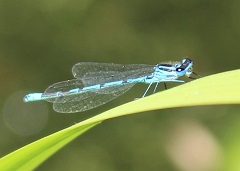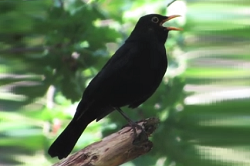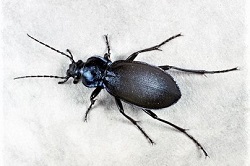JUNE
Summer has arrived (so the meteorologists tell us)!
The mixture of rain and sun means that plants will be growing rapidly.
Make sure that plant containers can drain and do not get waterlogged.
Also make sure they get enough moisture (even in wet weather the foliage of the plant itself can easily deflect rain away from the pot).
Putting shading over greenhouses can help the avoid the sun raising temperatures inside to levels that can impede growth.
Click on any picture or text link for more info
Prune flowering shrubs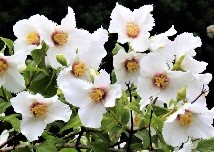 such as Deutzia, Kolkwitzia, Weigela and Philadelphus after they have finished flowering. If this job is left too late, the new growth put on after pruning may not have sufficient ripening time to flower well next year.
such as Deutzia, Kolkwitzia, Weigela and Philadelphus after they have finished flowering. If this job is left too late, the new growth put on after pruning may not have sufficient ripening time to flower well next year.
Tidy up Euphorbias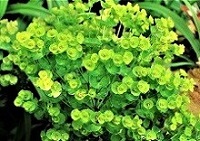 by cutting back spent flowering stems to their base – in some varieties they are susceptible to powdery mildew. Wear gloves, as the milky sap is a skin irritant.
by cutting back spent flowering stems to their base – in some varieties they are susceptible to powdery mildew. Wear gloves, as the milky sap is a skin irritant.
Thin heavy crops on fruit trees  to avoid ending up with lots of small fruit.
to avoid ending up with lots of small fruit.
Overcrowded fruit also encourage disease and overladen branches can break.
Apples should be left until the end of the month, after the ‘June drop’, their natural phase of fruit shedding.
Now is the time to sow biennials,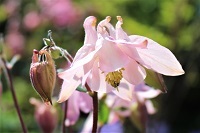 such as foxgloves, aquilegias, honesty, sweet williams, sweet rocket and wallflowers. After growing on through the summer, in the autumn they can be replanted where they will flower next spring.
such as foxgloves, aquilegias, honesty, sweet williams, sweet rocket and wallflowers. After growing on through the summer, in the autumn they can be replanted where they will flower next spring.
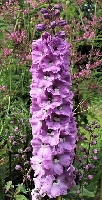 Plants with substantial flower spikes or heavy flower heads (e.g. delphiniums, sunflowers) will benefit from staking to prevent damage in heavy rain or strong winds.
Plants with substantial flower spikes or heavy flower heads (e.g. delphiniums, sunflowers) will benefit from staking to prevent damage in heavy rain or strong winds.
Put netting over soft fruit to avoid losing the crop to the birds. Ensure that it is fixed to the ground, otherwise there is a birds risk getting trapped underneath .
Birds are also very partial to cherries – whilst netting entire trees is impractical, you can put netting bags over the ends of branches carrying fruit.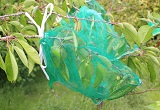
Remember to put the netting in place in time, as birds will eat the fruit just before you consider it ripe enough to pick!
Vine weevil grubs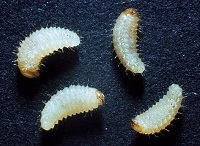 become active this month and can seriously damage containerised plants. Tip out suspect plants and inspect the rootball for the creamy, orange-headed maggots, which tend to curl up into a ‘C’ shape.
become active this month and can seriously damage containerised plants. Tip out suspect plants and inspect the rootball for the creamy, orange-headed maggots, which tend to curl up into a ‘C’ shape.
There are various chemical and biological controls available.
Cut back herbaceous perennials such as Oriental poppies, when they have finished flowering, then feed and mulch. This will stimulate the growth of new foliage and perhaps a second flush of flowers.
such as Oriental poppies, when they have finished flowering, then feed and mulch. This will stimulate the growth of new foliage and perhaps a second flush of flowers.
Take cuttings from garden pinks
and carnations (Dianthus).
Grasp suitable non-flowering shoots between thumb and forefinger, four pairs of leaves from the tip, and pull gently to remove them from the parent plant. Treat as softwood cuttings.
Also, check whether any of the items from May still need attention.
Wildlife in the garden
The RSPB shows what just a little can do
with this Sussex Wildlife Trust video
Butterfly Conservation’s quick identity guide
some really useful insects in the garden
Click any day below for a more detailed weather forecast, which also looks further ahead




